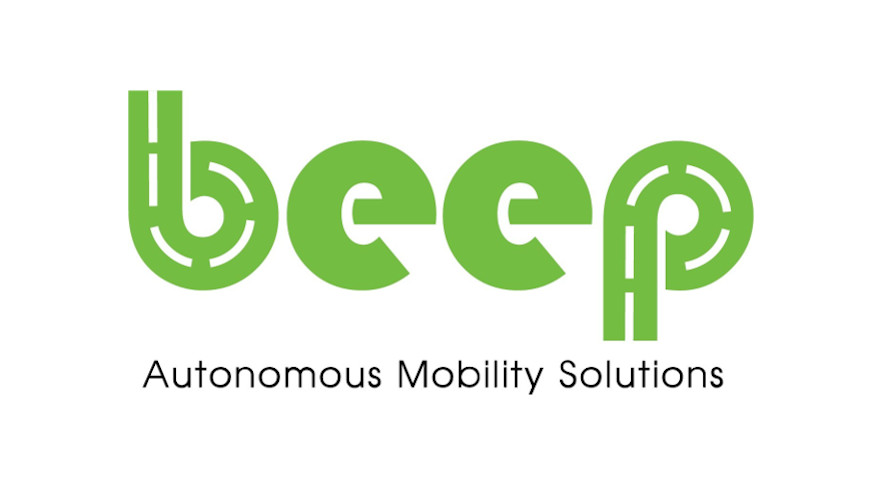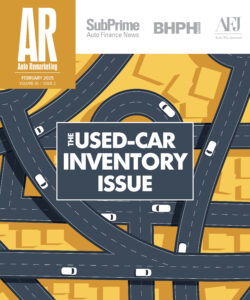Executive Profile: Beep CMO explores autonomous vehicle importance, education & safety

Credit: PRNewsfoto/Beep
Earlier this year, Beep, an autonomous vehicle mobility solutions company, made an executive with a history in journalism their chief marketing officer.
Raquel Asa was appointed to the position for the Florida-based company on March 2.
Beep’s autonomous mobility platform is designed to provide safe, efficient movement of passengers between defined locations.
According to the company website, it delivers “turnkey solutions for operating driverless electric vehicles on private and public roads.”
These services include monitoring, managing and operating the routes and buses from the Beep Command Center, and trained on-board stewards to greet passengers. Its mobility solutions can be utilized as-a-service, or purchased as an asset with a complementary suite of service offerings, according to the company and its new CMO.
These services include being the exclusive dealer and preferred partner for shared mobility autonomous vehicle research and development for NAVYA in Florida — an autonomous shuttle.
Focusing on the new addition to the Beep team, just last year, the company’s new chief marketing officer was awarded the Citizen Transportation Advocate of the Year award by the Women in Transportation Central Florida Chapter, which honors a citizen who is an outspoken supporter of transportation advancement and enhancement in the community. Prior to joining the auto mobility company, Asa worked as a transportation journalist and anchor for almost 15 years, most recently serving as the lead transportation reporter for WFTV in Orlando.
In this position she covered major advancements in infrastructure and autonomous vehicle technology, also covering the launch and growth of Beep and its first deployment in Lake Nona, a 17-square-mile mixed-use community in Orlando, southeast of Orlando International Airport.
Auto Remarketing spoke with Asa in late March. She said her efforts will be focused on strategic brand awareness and decision making for Beep initiatives. Asa entered her role at a trying time, just as the COVID-19 crisis was breaking out in full force.
But she told Auto Remarketing that her focus in her new role hasn’t changed.
“For us as a company, education and safety is still my utmost priority,” she said. “That hasn't changed, because when you look at just the industry (autonomous vehicles) as a whole and public perception on it, there's a lot of wariness,” noting “people just are not yet comfortable” with the technology.
Asa explained a lot of this concern comes down to the fact that many “just don’t know much about it (autonomous vehicles).”
“I feel in my role, I have the due diligence and responsibility to explain to the public the safety behind this. And I feel as long as people get a good understanding of that, and they feel more comfortable with it, that wariness will then start to fade away,” she said. “Or at least we'll be able to have the ability to chip away at it.”
In fact, she says she hears from many that wish they could learn more about autonomous mobility — and that’s where her background as a journalist comes in.
“It’s been ingrained in me for more than 15 years on telling an effective story and explaining it in terms that people can understand and identify with,” Asa said. “And those are some of the skills that I am looking to translate in this role and that I think I can be most effective, considering this is such a complex subject and industry.”
Covering the launch of Beep in Florida, Asa noted it was a “natural transition” to come from the side of the journalist, to marketing for Beep. This was especially true after seeing how the company grew from just an idea to putting shuttles on the road not just in Orlando, and it’s first service offering in Lake Nona, but across the country, including Peoria, Ariz.
“So seeing how this company has grown over the last year and just how they really roll down this process, specifically in Lake Nona, I know it was just a matter of successfully rolling out that process and educating the community in our future deployment areas, just like we did there,” said Asa.
As for her why the move from transportation journalism into the full-on transportation industry, she shared she gets that question a lot. She said it ultimately had to do with the track record of Beep, and how fast it has grown from the time of their deployment in September. She called the rate “incredible”, noting as a journalist covering the company, a jump to 12,500 passengers in the first six months of service on a one-mile route in Lake Nona was a big pull.
She said this growth works to “defy” some of the perceptions on public adoption, because on any given weekend, Asa noted Beep can have 500 passengers on a one-mile route, with just two to three shuttles running.
“And so, you know, you look at those little microcosms that we have here in Lake Nona, and it truly justifies what the national perception is about automated vehicles,” she said. “And so, if we can replicate that process that we're doing here to other areas, I think not just benefits us as a company, but it benefits the industry as a whole.”
The company is also looking to launch a number of additional routes in Lake Nona and beyond, approved by the Federal government, some of which we should see roll out by the summer.
“So, there are a lot of moving pieces to the pie,” said Asa, including the construction of a new, 10,000-square-foot headquarters, also located in Lake Nona.
The new chief marketing officer will play an instrumental role in shaping the messaging that is part of the new headquarters right now, which will move the company from its current flex space. The completion goal for the headquarters, as of late March, was the end of summer 2020.
The space will serve two purposes — a command center, which is “going to be where we have constant monitoring of all of our shuttles on the ground from vehicle performance to passenger experience;” the other portion being office space and areas for collaboration, including an “innovation lab”.
“An innovation lab is an area where we're bringing in partners in all aspects of the AV (autonomous vehicle) industry. And that's an area where we're going to invite anybody, quite frankly, anybody who's in the AV industry, or anybody who wants to learn about AV, understand the process and all of the things that it takes to get AV on the ground, and more,” Asa said.
Ultimately, Asa said the facility will work to take visitors on a “path to understanding” what goes into getting an AV vehicle off the ground. Academic partners will also be pulled in to assist with the creation of the lab, as well. It’s one of the company's big pushes as part of its headquarters to ensure the public understands — again — what it takes to get an AV company, or system, off the ground.
“So, you'll get to experience a shuttle and understand all the sensor technology all live …. the GPS technology required to get the vehicle to move along the certain fixed routes, vehicle-to-vehicle and vehicle-to-infrastructure technology, and how that integrates and works with each other,” Asa said.
So — why are AVs so important to Asa and Beep? It comes down to individualized transportation, and solving congestion problems. The aforementioned shuttle holds up to 15 people, which is the equivalent to five or six cars on the road, given varied vehicle sizes.
“So, you're really solving two pieces, the congestion problem, and then quite frankly, the environmental problem, right? Because you know, you look at our vehicles, which are 100% electric; there's no carbon emissions, and the benefit is that you're transporting more people,” she explained.
Interestingly, she also shared that developers are likely going to pay more attention in the future to these types of fleets, and fleet production routes, as mobility and mobility options will likely become more of a concern in coming years given changes in transportation trends and the climate. Asa also pointed out AVs are expected to help the concern of human driving error rates, which has the potential to make neighborhoods more friendly for bikes, children, animals, and more.
“I think you're going to see a bigger shift in the focus developers are making in this part of the process, because they also get better return on their land value without having to build lots of parking garages … We’re providing them the network for them to connect residents, retail, hospitals and so forth,” she said.
And in terms of transportation as a whole, Asa thinks the industry as a whole will begin to see more cohesiveness, from sectors like AV vehicles, to rail, to airplanes.
“Because if you don't have all of those networks and mobility networks working together, quite frankly, all of us will fail,” she added.
Many airports are close to residential areas, meaning AV mobility services from companies like Beep can work to make a “connected corridor,” she said. “It’s about the ability to create that network as well as connecting communities to airports, which then takes vehicles off the road. So, I think as long as you can create that ecosystem, with all those transportation networks, I think everything and everyone would be better off.”

 View The Latest Edition
View The Latest Edition

